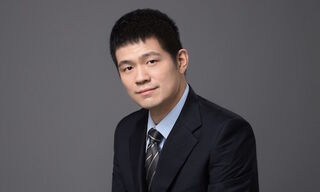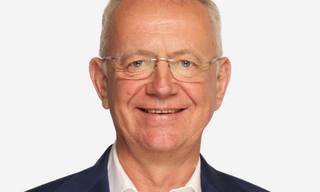The key differentiator between neobanks and traditional banks or self-service banking is the ability to maintain, rather than replace, human contact through technology, Niccolò Garzelli writes in an essay for finews.first
This article is published on finews.first, a forum for authors specialized in economic and financial topics.
Financial institutions (FIs) need to leverage and adapt their existing infrastructures to offer better and enhanced services. This is the only way they can meet new market requirements. Until now, it has been a major challenge for banks that ATMs were seen primarily as cash access only. In addition, many bank branches were closed because they were no longer profitable.
While Swiss customers bring their branches the most profit across Europe according to PwC's Retail Banking Monitor 2021, Austria and Germany only represent the rear midfield.
«This number will continue to decrease»
Numerous bank branches have already been closed in recent years – the number of branches in Switzerland has declined by 360 since 2016, there have been 4,470 in Switzerland at the end of 2020, according to the Branch Transformation 2021 report by Retail Banking Research (RBR) – and this trend is set to continue.
This number will continue to decrease to 4,150 branches by the end of 2025, a decline of about one percent per year. This will particularly affect bank customers in communities where financial services are generally more difficult to access – for example, in rural areas, which will inevitably impact the reputation of traditional banks.
There are numerous options for providing ubiquitous access to banking services and making the #NextGenBranch a reality: by implementing advanced self-service banking technology and leveraging assisted self-services and remote banking services, the bank branch becomes future-proof and an integral service point for financial and other services within a community. A branch of this type would be accessible around the clock and could also utilize other technologies:
1. Remote Banking: video assistance systems, for example, experienced a boom during the pandemic, and FIs were able to use them to significantly expand their product portfolio and customer service. As employees are no longer tied to one location with these systems, they can also offer their services beyond their own branch. As a result of social distancing, many people have also become familiar with video banking, which enables close, confidential and reliable communication between a bank advisor and his bank customer.
2. ATM Pooling: Banks are increasingly looking closely at how much their ATM networks are costing them to maintain, how much they are used, and whether they are profitable. ATM Pooling allows banks to ensure that widespread cash services are maintained for the future, especially to customers in locations where relatively low demand would render a branch or multiple bank ATMs uneconomical, in an efficient and cost-effective way.
3. Assisted Self-Service Terminals: these devices represent a bridge between physical and digital channels. Evolving ATMs located within the branch in advanced self-service terminals with add-on services such as live video calls with financial product experts can allow access to cash to be subsidized through generating new revenue streams. According to RBR, there were already more than 340,000 ASST-terminals worldwide at the end of 2020 – 73 of them in Switzerland. This number will increase by 24 percent per year up to 280 ASSTs in 2025.
4. NextGen Self-Service Architecture: Banks need to exploit new digital channels and merge them with physical channels on secure, state-of-the-art technology platforms, deploy innovative technologies and build an advanced self-service architecture to remain competitive. For example, with an integrated channel strategy, financial institutions can transform and improve their branch and ATM estate, shorten time-to-market, individualize and optimize customer service, and enhance the omnichannel banking experience for consumers.
In addition to using new technologies and new approaches to customer engagement, it is essential not to limit customers to a single channel, such as mobile banking. Omnichannel is a key advantage of traditional banks and the key to success: the same experience should be created at every point of contact between bank and customer.
«Technology-driven strategies can lead to an improved customer experience»
Ideally, a customer should even be able to approach the same bank advisor regardless of channel. The key differentiator between neobanks and traditional banks or self-service banking is the ability to maintain, rather than replace, human contact through technology.
Technology-driven strategies can make banking services more inclusive and lead to an improved customer experience. They are crucial to bridging the gap between branch closures and the population's need for access to cash and financial services.
Niccolò Garzelli joined Auriga in 2019 as Senior Vice President Sales with more than 20 years of experience in banking and enterprise technology. He has held executive and sales management positions at Diebold Nixdorf, BMC Software and Computer Associates.
Previous contributions: Rudi Bogni, Peter Kurer, Rolf Banz, Dieter Ruloff, Werner Vogt, Walter Wittmann, Alfred Mettler, Robert Holzach, Craig Murray, David Zollinger, Arthur Bolliger, Beat Kappeler, Chris Rowe, Stefan Gerlach, Marc Lussy, Nuno Fernandes, Richard Egger, Maurice Pedergnana, Marco Bargel, Steve Hanke, Urs Schoettli, Ursula Finsterwald, Stefan Kreuzkamp, Oliver Bussmann, Michael Benz, Albert Steck, Martin Dahinden, Thomas Fedier, Alfred Mettler, Brigitte Strebel, Mirjam Staub-Bisang, Nicolas Roth, Thorsten Polleit, Kim Iskyan, Stephen Dover, Denise Kenyon-Rouvinez, Christian Dreyer, Kinan Khadam-Al-Jame, Robert Hemmi, Anton Affentranger, Yves Mirabaud, Katharina Bart, Frédéric Papp, Hans-Martin Kraus, Gerard Guerdat, Mario Bassi, Stephen Thariyan, Dan Steinbock, Rino Borini, Bert Flossbach, Michael Hasenstab, Guido Schilling, Werner E. Rutsch, Dorte Bech Vizard, Adriano B. Lucatelli, Katharina Bart, Maya Bhandari, Jean Tirole, Hans Jakob Roth, Marco Martinelli, Thomas Sutter, Tom King, Werner Peyer, Thomas Kupfer, Peter Kurer, Arturo Bris, Frederic Papp, James Syme, Dennis Larsen, Bernd Kramer, Ralph Ebert, Armin Jans, Nicolas Roth, Hans Ulrich Jost, Patrick Hunger, Fabrizio Quirighetti, Claire Shaw, Peter Fanconi, Alex Wolf, Dan Steinbock, Patrick Scheurle, Sandro Occhilupo, Will Ballard, Nicholas Yeo, Claude-Alain Margelisch, Jean-François Hirschel, Jens Pongratz, Samuel Gerber, Philipp Weckherlin, Anne Richards, Antoni Trenchev, Benoit Barbereau, Pascal R. Bersier, Shaul Lifshitz, Klaus Breiner, Ana Botín, Martin Gilbert, Jesper Koll, Ingo Rauser, Carlo Capaul, Claude Baumann, Markus Winkler, Konrad Hummler, Thomas Steinemann, Christina Boeck, Guillaume Compeyron, Miro Zivkovic, Alexander F. Wagner, Eric Heymann, Christoph Sax, Felix Brem, Jochen Moebert, Jacques-Aurélien Marcireau, Ursula Finsterwald, Claudia Kraaz, Michel Longhini, Stefan Blum, Zsolt Kohalmi, Karin M. Klossek, Nicolas Ramelet, Søren Bjønness, Andreas Britt, Gilles Prince, Darren Willams, Salman Ahmed, Stephane Monier, and Peter van der Welle, Ken Orchard, Christian Gast, Jeffrey Bohn, Juergen Braunstein, Jeff Voegeli, Fiona Frick, Stefan Schneider, Matthias Hunn, Andreas Vetsch, Fabiana Fedeli, Marionna Wegenstein, Kim Fournais, Carole Millet, Ralph Ebert, Swetha Ramachandran, Brigitte Kaps, Thomas Stucki, Neil Shearing, Claude Baumann, Tom Naratil, Oliver Berger, Robert Sharps, Tobias Mueller, Florian Wicki, Jean Keller, Niels Lan Doky, Karin M. Klossek, Ralph Ebert, Johnny El Hachem, Judith Basad, Katharina Bart, Thorsten Polleit, Bernardo Brunschwiler, Peter Schmid, Karam Hinduja, Zsolt Kohalmi, Raphaël Surber, Santosh Brivio, Mark Urquhart, Olivier Kessler, Bruno Capone, Peter Hody, Lars Jaeger, Andrew Isbester, Florin Baeriswyl, and Michael Bornhaeusser, Agnieszka Walorska, Thomas Mueller, Ebrahim Attarzadeh, Marcel Hostettler, Hui Zhang, Michael Bornhaeusser, Reto Jauch, Angela Agostini, Guy de Blonay, Tatjana Greil Castro, Jean-Baptiste Berthon, Marc Saint John Webb, Dietrich Goenemeyer, Mobeen Tahir, Didier Saint-Georges, Serge Tabachnik, Rolando Grandi, Vega Ibanez, Beat Wittmann, David Folkerts-Landau, Andreas Ita, Teodoro Cocca, Michael Welti, Mihkel Vitsur, Fabrizio Pagani, Roman Balzan, Todd Saligman, Christian Kaelin, Stuart Dunbar, Fernando Fernández, Lars Jaeger, Carina Schaurte, and Birte Orth-Freese, Gun Woo, Lamara von Albertini, Philip Adler, Ramon Vogt, Gérard Piasko, and Andrea Hoffmann.






















